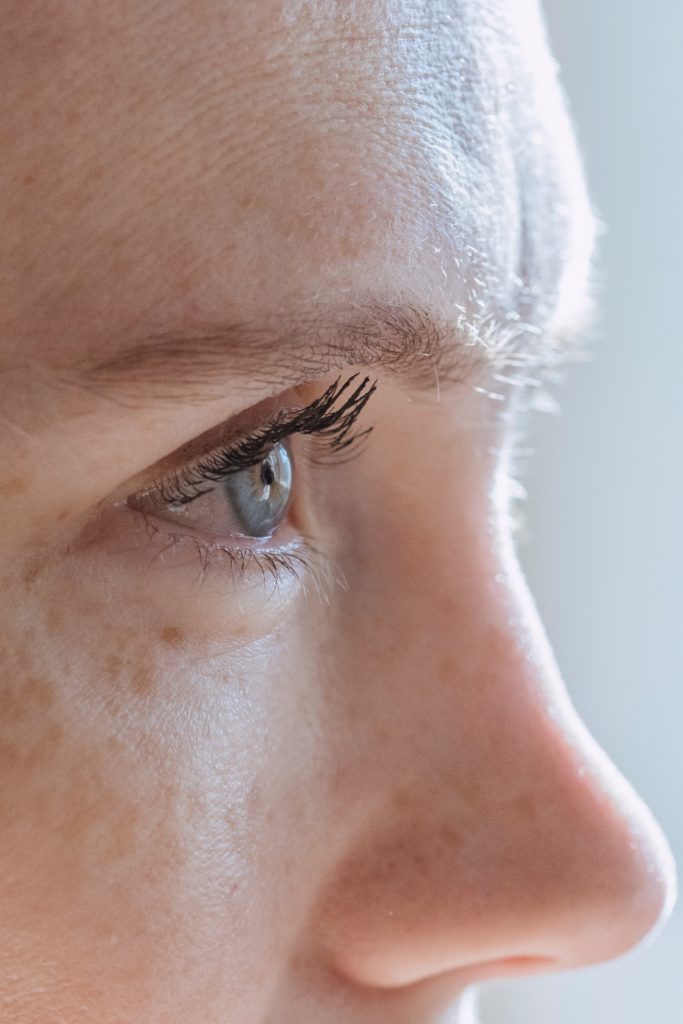Most people picture a monk sitting with his back straight and his eyes closed when they think about meditation. They ask you to close your eyes in Mindfulness-Based Stress Reduction, the most popular type of meditation in the West. But if you wonder can I meditate with my eyes open? Well, this article will help you get your answer.

In both the Tibetan and Zen traditions, meditation with one’s eyes open is the norm. It has the advantage of making it simpler to avoid tiredness and to shift to awareness throughout regular tasks. The biggest disadvantages include watery eyes and heavy eyelids, both of which can be quite distracting.
As you can see, it is not only conceivable but also the default mode of meditation in certain highly regarded meditation traditions.
Let’s go a bit deeper.
Table of Contents
The benefits and drawbacks of meditation with open eyes
Meditation with eyes closed
When people are first introduced to meditation, they are usually instructed to close their eyes. Why is this the case?
On the one hand, it is the most common type of meditation, and it is most likely how the instructor or trainer practises. But it’s more complicated than that.
If you look at what distracts us the most, I’d guess that for 90% of the population, it’s anything we chance to see. We have gotten so accustomed to following anything that seems fascinating to us with our eyes that it has become a tough habit to break.

We monitor the environment even when nothing changes. I recall back to when I was in school. I would take notes, notes, notes, but I would also glance about at the other kids. Scanning everything is available.
We require some level of concentration when meditating, and the more distractions there are, the more difficult it gets.
So the teacher instructs us to close our eyes. One less thing to be concerned about.
The last disadvantage of opening the eyes is that some meditation methods are significantly simpler to conduct while the eyes are closed. Going inside, such as completing a body scan, awareness of thoughts and emotions meditation, or an intricate visualization, is significantly simpler to complete with your eyes closed.
Meditate with eyes open
If you take Mindfulness-Based Stress Reduction training, the instructor will most likely give you the option of keeping your eyes open if you do not feel comfortable. This is a crucial piece of advice since some people grow anxious when they close their eyes in the midst of a crowd. You should keep them open if you’re like that.
However, this is not why meditation traditions advise you to meditate in this manner.
One of the common myths regarding meditation is that closing your eyes allows you to attain deeper realms. This is something I’ve been thinking about for a long time.
However, as we’ll see in the following line, shamatha meditation is done with the eyes open. The significance of this is that shamatha is the deepest level of absorption. It doesn’t get much deeper than that for those of us who aren’t monks. As a result, this is a non-argument. Open eyes have two key goals in various styles of meditation.

First, one of the impediments to reaching higher levels of meditation is the dullness of the mind that develops once one has evolved sufficiently. Keeping your eyes closed might exacerbate the situation. So, in this case, the opposite antidote is offered than what we as novices receive.
Second, by keeping your eyes open, you may observe the mind’s spatial similarity. If you do it long enough, you will begin to perceive the outer world as the interior world. Better more, you will see that the space from the outside expands inwards.
This brings to light the fact that our minds have a broad, spacelike character. Once you’ve discovered this, you’ll see it in other types of meditation as well, so it’s a type of insight.
Meditation Traditions With Eyes Opened
Zazen
Zen is a Spartan philosophical system. Zen may also be described as a minimalist philosophy. When you combine these two, you get zazen, or just sitting as it is frequently referred as.
Beginners usually start with breathing meditation and then on to koans. Zazen, or merely sitting practise, is exactly what it sounds like: you do nothing but sit and be mindful of the present moment.
All of these exercises are carried out with open eyes. Because it is Zen, people frequently face a wall or a black curtain to prevent their eyes from wandering off in pursuit of something more enjoyable to do than meditate.
Tibetan shamatha meditation
Shamatha is a type of breathing meditation that has been divided into 9 phases for ease of use.
Each level has its own set of obstacles and techniques. However, the ultimate objective is to achieve shamatha, which is the state in which the mind entirely unites. It is stated that the body and mind are so malleable that meditation for three hours or more becomes quite simple and pleasurable.
Shamatha, like Zen, promotes open-eyed meditation. First, to fight against boredom, and second, to recognize the mind’s spatial nature. Something that the Tibetan tradition places a high value on.
Trataka or gazing meditation
Tratata is a type of gazing meditation in which you place a candle in front of you and simply stare at the flame. The goal is to keep your eyes awake at all times. After a while, the eyes will begin to produce tears. Simply keep them open for as long as you can. Close your eyes and imagine a candle in your mind’s eye.
This practice is claimed to strengthen and purify the mind (no idea if this is true). The strategy benefits from attempting not to blink and from the visualisation of the candle that occurs after looking.
But what it most emphatically does is improve your ability to concentrate.
How to Meditate While Keeping Your Eyes Open
Although the three approaches described above differ greatly in their goals and philosophy, they all agree on how to meditate with your eyes open.
Look down at a 45-degree angle and focus on a location 1 to 2 metres in front of you. Maintain a relaxed and ideally unfocused look.
These guidelines are meant to keep your eyes from straining and your mind from straying. The 45-degree downward tilt keeps the eyes from becoming fatigued. They will, however, become fatigued in the beginning.
Except in the case of trataka, the most significant aspect of meditation is not what you see, but what you concentrate on. So the idea is to avoid focusing and to maintain a light look.
To reduce the chance of eye wandering, even more, make what you’re looking at basic and uncomplicated. I’m not going to go as far as the Zen monks and look at a black wall. It is sufficient to have some open floor space with only a few things in the field of vision.
Meditation has numerous benefits and advantages. If you’re looking to start meditating or build your practice and you want to get started on your journey of guided meditation or meditation at home, we can help.
Evolve has over 50+ guided meditation audios designed to make it light, refreshing and easy to learn. The Evolve app is now live globally on Android & Apple, click here to try for free!
Click on the links to read more article
Meditation For Higher Self-Esteem
Daily Meditation- How to Practice and What are the Benefits?
How To Practice Gratitude Meditation
Co-founder and brains at LeapX by C32 Media Labs
Mail at sarah@c32.media to connect with her.